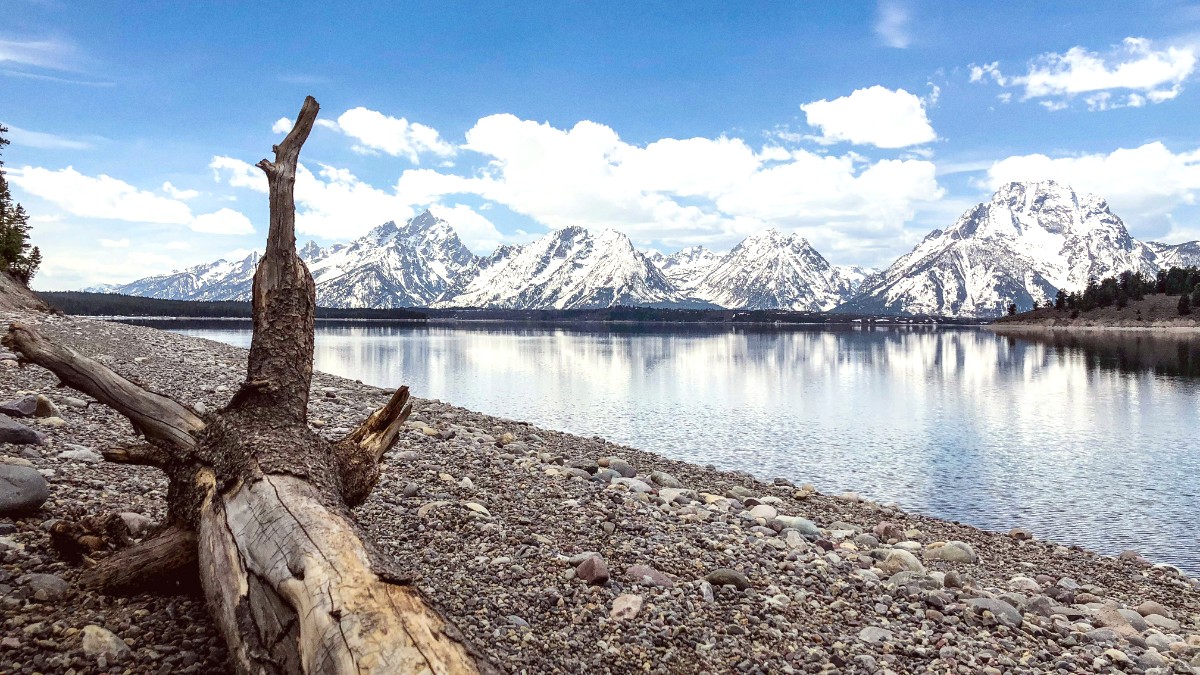
Wyoming, USA
Certain places immediately come to mind when envisioning Jackson Hole. These landmarks offer memorable experiences and photo opportunities.
From town to national parks, distinctive features await exploration.
The Town Square serves as a beloved symbol of Jackson Hole, welcoming visitors with its unique antler arches.
Established to protect the Jackson Hole elk herd.
Over 7,000 elk winter here, offering a remarkable wildlife spectacle.
Available in winter only (mid-December to early April), providing close-up views of the elk herd.
The Visitor Center, shared with Grand Teton National Park, open year-round.
In other seasons, elk can be seen from pullouts along US-89.
Explore Jackson Hole's artistic and historical depth through its museums and cultural centers.
Features over 5,000 works of art representing wildlife from around the world.
Exhibits on local Native American history, fur trapping, homesteading, ranching.
A multi-disciplinary arts center hosting live music, theater, dance, film, and visual arts.
Secure experiences in advance, especially during peak seasons. Many popular tours have limited capacity. Use GetYourGuide.
Many attractions, like the tram and some museums, operate with timed entry. Check their websites for details.
A historic site within Grand Teton National Park, offering educational programs and conservation insights.
Collection spans from 2500 B.C. To the present, including works by prominent artists.
Displays provide deep insights into the valley's past and development.
Serves as the community's hub for diverse artistic expression.
Discover the past of Jackson Hole by visiting its historical sites, each telling a story of early settlers.
A cluster of historic barns and homesteads built by Mormon settlers in the late 19th century.
A historic ferry crossing on the Snake River, originally operated by Bill Menor, a pioneer settler.
A world-renowned ski resort in winter, and a popular hub for hiking, biking, and scenic tram rides in summer.
This museum offers extensive historical context for the entire valley.
Jackson Hole's main draw lies in its spectacular natural environment. Explore parks, scenic viewpoints, and wildlife-rich areas.
Grand Teton National Park is the centerpiece of the region's natural beauty. Yellowstone National Park is also accessible.
Snake River Overlook, Schwabacher Landing (reflective beaver ponds), and Signal Mountain Summit Road offer panoramic views.
National Elk Refuge, Antelope Flats Road, Moose Wilson Road, and Gros Ventre Road are prime for wildlife viewing.
The Teton Range is a young, fault-block mountain range, characterized by dramatic, jagged peaks without foothills.
Jackson Lake, a large natural lake within Grand Teton National Park, formed by glaciers.
The Snake River is used for scenic floats, whitewater rafting, and fishing.
Primitive lake beaches are found at String Lake or Colter Bay, perfect for relaxation.
Many park areas feature trails to access these natural wonders, varying in difficulty.
Find tours and activities.A world-renowned ski resort in winter, and a popular hub for hiking, biking, and scenic tram rides in summer.
The world's first national park, famous for geysers like Old Faithful, hot springs, and diverse wildlife.
Park access often involves an entrance fee.
Visitor centers offer maps and up-to-date conditions. Always check for seasonal road closures, especially in shoulder seasons.
Venture beyond the most popular sites to discover Jackson Hole's quieter, equally rewarding hidden gems.
A rustic, naturally heated swimming pool and soaking area, accessible by car in summer, and by snowmobile, fat bike, or ski in winter.
A geothermally warmed pond near Kelly, popular for birdwatching and unique aquatic life. Swimming is not recommended.
Offers great views of the valley and opportunities to spot bighorn sheep in the Bridger-Teton National Forest.
Excellent for moose and bear photography, especially at dawn and dusk, with beautiful light reflecting on the wetlands.
A log chapel with a large window framing the Tetons, offering serene and photogenic views.
Features reflective beaver ponds offering stunning views of the Tetons, also good for wildlife viewing.
This seasonal road offers panoramic views of Jackson Lake, the Snake River, and the entire Teton Range.
Protected properties offering serene walking paths and viewpoints away from the main crowds.
Visit Mormon Row at sunrise for optimal light and fewer crowds.
Jenny Lake is popular for hiking, boat rides, and access to Hidden Falls and Inspiration Point.
For wildlife viewing, look along park roads at dawn and dusk when animals are most active.
Always maintain a safe distance from wildlife for your safety and theirs.
Booking ahead for popular tours and activities is highly recommended, especially during peak seasons.
Utilize reputable online platforms for securing your attraction tickets and guided tours.
For specialized adventures or unique experiences, booking directly with local tour operators can be beneficial.
Many museums and cultural institutions charge an admission fee for their exhibits.
A fee applies for exhibits at the National Museum of Wildlife Art and Jackson Hole Historical Society & Museum.
Grand Teton National Park and Yellowstone National Park have entrance fees.
Consider an America the Beautiful Pass for access to all national parks if visiting multiple locations over a year.
During peak seasons, popular attractions and tours often experience high demand and sell out quickly.
Spontaneous walk-in participation for popular tours may not be possible.
These protected areas offer serene walking paths and viewpoints away from the main crowds. They provide quiet reflection and insight into local conservation.
Excellent for spotting elk, moose, and bighorn sheep. This area often sees fewer visitors than main park roads.
While known to mountain bikers, some hiking trails in the Teton Pass area offer solitude and stunning views away from park crowds.